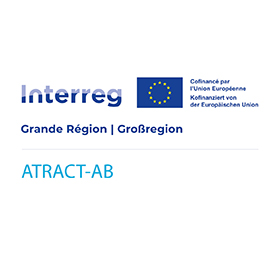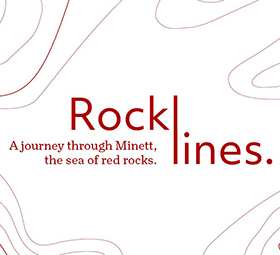


UNESCO in Luxembourg
THE LUXEMBOURG COMMISSION FOR UNESCO
The Luxembourg Commission for UNESCO is an autonomous advisory commission attached to the Ministry of Culture since 2001. Its mission is to promote the objectives, programmes and actions of UNESCO in Luxembourg. Its members represent government bodies, public and private institutions, universities and schools, as well as NGOs involved in UNESCO projects in the fields of culture, science, education and communication. The current Commission was created by a Grand Ducal Regulation of 12 December 2014.
THE PERMANENT REPRESENTATION
Created in the summer of 2022, the Permanent Representation represents the Grand Duchy of Luxembourg at the OECD and UNESCO. It is dedicated exclusively to relations with these two organisations, based in Paris, whose mandate is particularly important in an increasingly complex world with global issues such as economic development, education, climate change and attacks on culture. All these global challenges can only be resolved in multilateral forums.
On 17 December 1994, the old town and fortifications of the city of Luxembourg were declared a World Heritage Site by UNESCO. According to UNESCO, “because of its strategic position, the fortress of Luxembourg was one of the most important fortified sites in Europe from the 16th century until 1867, when it was dismantled”. Reinforced on several occasions during the transfer of power from one European power to another (the Holy Roman Emperors, the House of Burgundy, the Habsburgs, the Kings of Spain and France, and finally the Prussians), its fortifications were a summary of the military architecture of several centuries”. A UNESCO site manager coordinates activities to promote, safeguard and protect the site.
<
MEMORY OF THE WORLD
The Memory of the World International Register, created by UNESCO in 1992, is a list of all documentary heritage collections identified by the Advisory Committee as meeting the selection criteria of universal interest.
The programme defines the various components of documentary heritage (archives, libraries, books, films, scores, manuscripts, historical documents, photographs, works of art) and ensures their preservation and accessibility.
The Family of Man is a legendary photographic exhibition created in 1955 by the great Luxembourg-born photographer Edward Steichen (1879-1973) for the New York Museum of Modern Art (MoMA).
It contains 503 photographs by 273 photographers from 68 countries, including famous artists such as Henri Cartier-Bresson, Robert Doisneau, Brassaï, Robert Capra and Dorothea Lange. Seen by some 9 million people around the world, it was donated to Luxembourg by the United States government.
On permanent display at the Château de Clervaux, the exhibition was included in the UNESCO Memory of the World Register in 2003.
INTANGIBLE HERITAGE
Intangible heritage is at once traditional, contemporary and living, as it includes modern rural and urban practices.
It develops from its roots in communities and depends on those whose knowledge of traditions, skills and customs has been passed down from generation to generation or to other communities.
Although fragile, intangible cultural heritage is an important factor in preserving cultural diversity in the face of increasing globalisation. Understanding the intangible cultural heritage of different communities is essential for intercultural dialogue and promotes respect for other ways of life.
On 16 November 2010, the UNESCO Intergovernmental Committee for the Safeguarding of the Intangible Cultural Heritage unanimously decided to inscribe the Hopping Procession of Echternach on the Representative List of the Intangible Cultural Heritage of Humanity.
Since 2017, the inventory of Luxembourg’s intangible heritage has been regularly updated. In 2022, the feast of Saint Barbara, patron saint of miners, which is still celebrated in the Minett UNESCO Biosphere, was added to the national inventory.
THE WORLD NETWORK OF BIOSPHERE RESERVES
© Marc Weis
The Man and the Biosphere (MAB) programme is an intergovernmental scientific programme that aims to provide a scientific basis for improving the relationship between man and nature on a global scale. Launched in the early 1970s, MAB proposes an interdisciplinary research agenda, promotes capacity building, and has as its main objectives the reduction of biodiversity loss and its environmental, social and economic aspects.
Addressing issues at the intersection of science, ecology, society and development, MAB brings together several disciplines – natural sciences, social sciences, economics and education – to improve the human environment and conserve natural ecosystems.
On 28 October 2020, the Minett UNESCO Biosphere, managed by the Syndicat PRO-SUD, was included in the prestigious Man and the Biosphere (MAB) programme.
THE UNESCO GLOBAL GEOPARKS NETWORK
Photo: Ben Kerckx (www.pixabay.com)
A UNESCO Global Geopark is an area of geological heritage of international importance.
The Natur- & Geopark Mëllerdall has been designated a UNESCO Global Geopark in 2022. Its aim is to raise public awareness of the value of the region’s geological heritage, with a focus on sustainable development in line with the United Nations’ 2030 Agenda.
The bid was supported by government bodies such as the Ministry of Energy and Spatial Planning, regional partners such as the Regional Tourist Office of Mullerthal – Luxembourg’s Little Switzerland and the Luxembourg Commission for UNESCO.
The UNESCO Associated Schools Project Network (ASPnet, coordinated by UNESCO Headquarters in Paris) brings together educational institutions from all over the world with a common goal: to build the defences of peace in the minds of children and young people and to raise their awareness of sustainable development.
Spread across 182 countries, ASPnet’s 12,000 member schools work to promote international understanding, peace, intercultural dialogue, sustainable development and quality education. Education for global citizenship and Education 2030 are of paramount importance. In Luxembourg, 13 primary and secondary schools are part of the UNESCO Luxembourg schools network.
Launched in 1992, the UNESCO Chairs Programme supports the creation of university chairs in the fields of competence of the Organisation, namely education, natural and social sciences, culture, communication and human rights.
In conjunction with UNITWIN, the UNESCO Chairs Programme promotes international cooperation and networking between universities in order to strengthen institutional capacities through knowledge sharing and collaboration.
In many cases, networked chairs act as think tanks and bridge-builders between the university, civil society, local communities, research and policy makers.
They serve to inform policy decisions, create new teaching initiatives, generate innovation through research and help enrich existing university programmes while promoting cultural diversity. In areas where there are skills shortages, the Chairs are often centres of excellence and innovation at national and regional level.
Today, the programme brings together 850 institutions in 117 countries, including the UNESCO Chair in Human Rights at the University of Luxembourg.

















